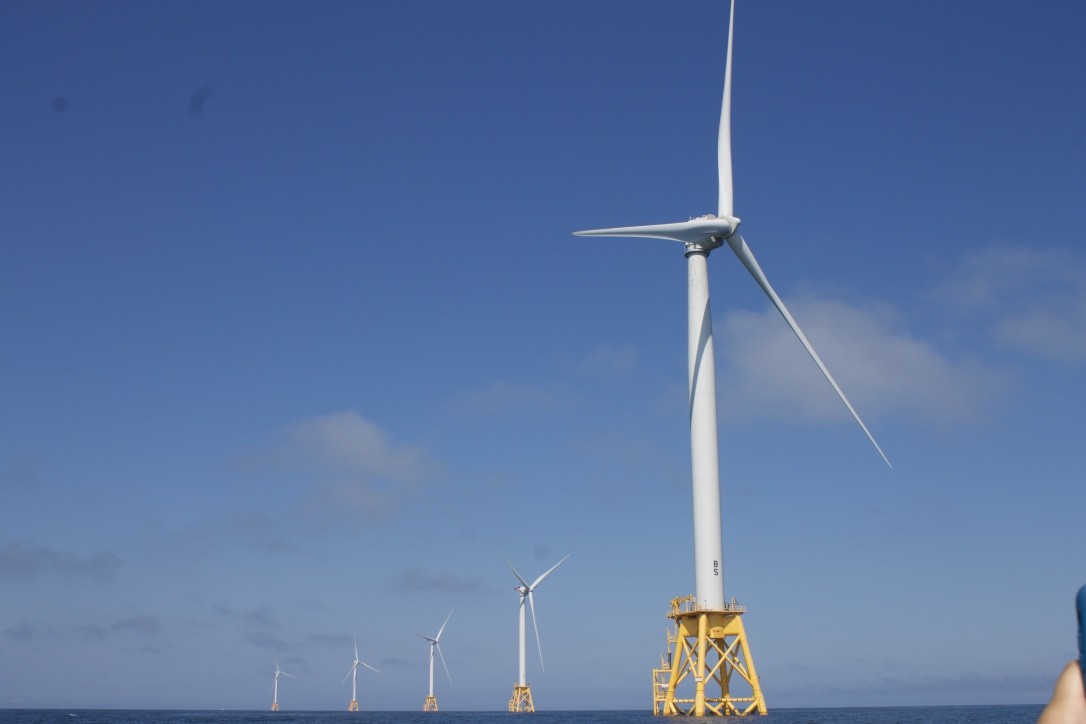Photo courtesy of Aisylne Calianos. The underground base of the Block Island Wind Farm serves as an artificial reef, allowing fisherman to get more catch.
A University of Rhode Island graduate student and professor conducted a study observing the effects of the Block Island Wind Farm on recreational and commercial fishing in the area.
The study consisted of interviewing 25 fisherman, which was a mix of both commercial and recreational fishers. Questions posed to the fisherman sought to find out if they were noticing any specific changes with the fish and the area in general. URI partnered with the Rhode Island Department of Environmental Management. The Rhode Island DEM analyze the biological data around the wind farm, which included any changes in marine communities.
URI graduate student, Talya ten Brink, lead most of the study as part of her dissertation research to graduate, while marine professor Tracey M. Dalton acted as her advisor.
In general, the results of interviews found that recreational fishermen viewed the wind turbines more positively than commercial fishermen.
“A lot of commercial fishermen were worried that future wind farms could impact them,” ten Brink said. “I think that recreational fisherman
Ten Brink, who conducted many of the interviews along with fellow students, mentioned how it was interesting to talk to spearfishers who have been underwater and observed the turbines and new fish around them first hand.
The overall results of the interviews followed the trend of recreational fisherman thinking positively about the wind farm, while commercial fisherman appeared more negative and concerned. Both Dalton and ten Brink stated that the reasons for worry from the commercial fisherman were more human-related and not biological.
“It wasn’t that the turbines themselves were really impacting the commercial fisherman,” Dalton said. “It was more so fact that it changed the landscape. The recreational fisherman were now using the space differently and that affected the commercial fishermen. They were finding that they were getting crowded out, that there was the recreational fisherman getting tangled in their gear.”
The wind farm has generated a new form of tourism in the area, which has attracted a much more recreational crowd for fishing and diving. Additionally, it has added boat traffic to the area as people try to view the turbines.
This type of new interference is mainly what is causing the commercial fisherman to think negatively about the wind farm.
Dalton also mentioned that while there were minor changes observed by the fisherman, the changes were not staggering. She also mentioned that a reason for there not being huge biological changes is because the wind farm is still fairly new. It was constructed in 2016.
The study was funded by the Rhode Island Sea Grant. The interviews took place back in the summer of 2017, and they then had to analyze and formulate the data. The published results of the interviews were released in Nov. 2018.

